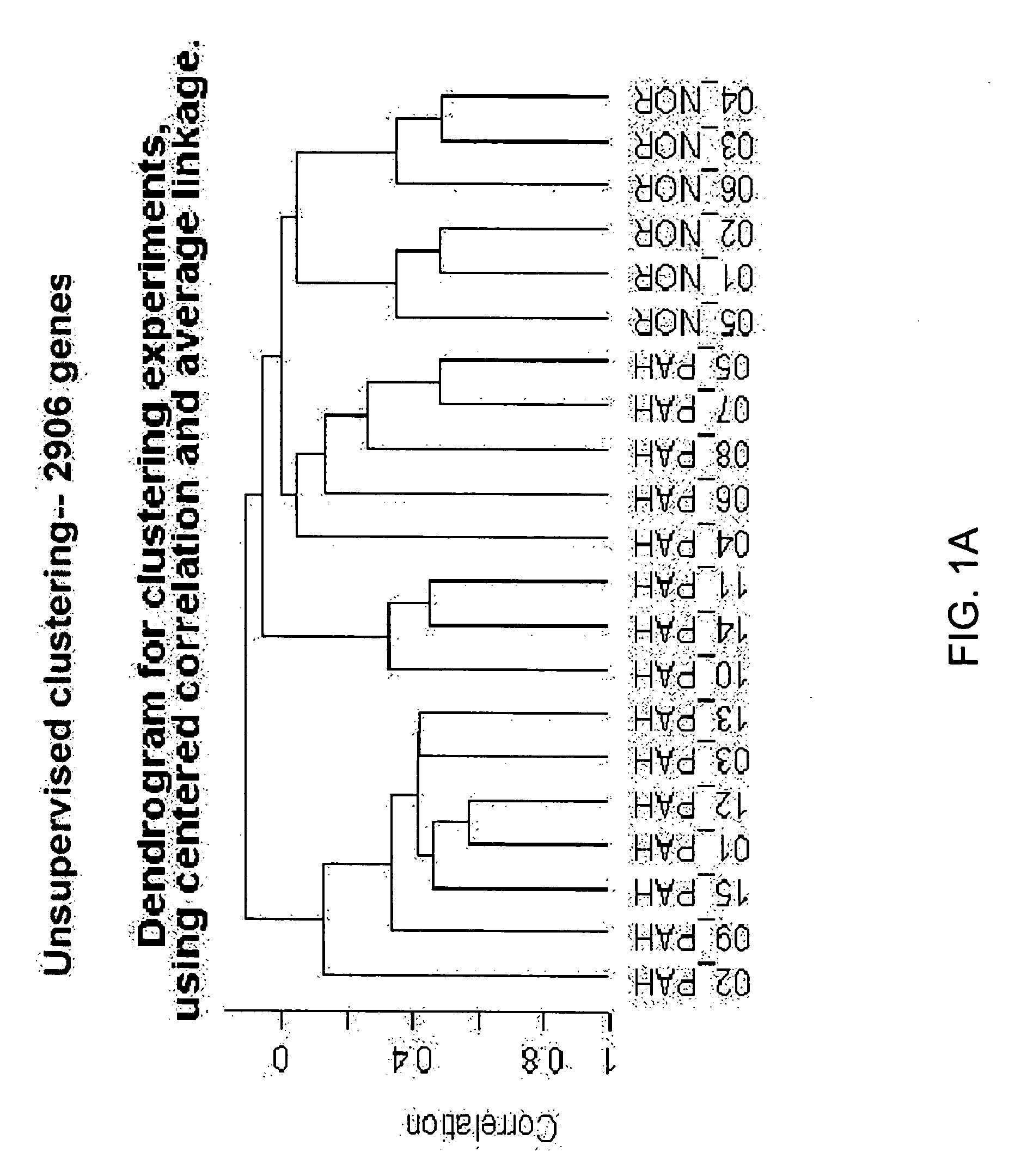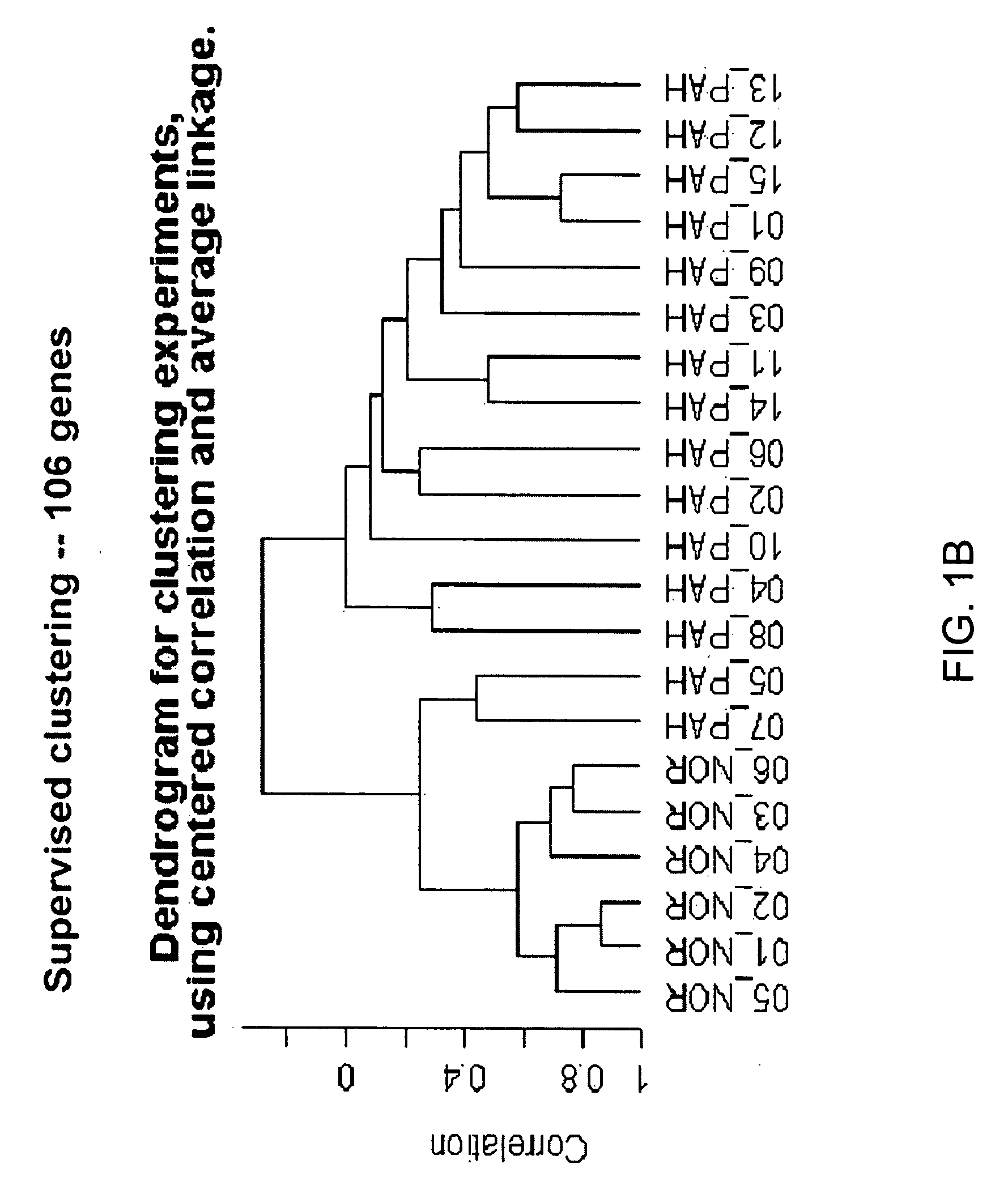Diagnosis of disease and monitoring of therapy using gene expression analysis of peripheral blood cells
a technology of peripheral blood cells and gene expression analysis, which is applied in the direction of material analysis, biochemistry apparatus and processes, instruments, etc., can solve the problems of right heart failure and death, complex pathogenesis of severe pah, and quality ribonucleic acid extraction, so as to reduce the expression or activity of adrenomedullin, increase and decrease the expression or activity of the gene
- Summary
- Abstract
- Description
- Claims
- Application Information
AI Technical Summary
Benefits of technology
Problems solved by technology
Method used
Image
Examples
examples
[0117] The following example describes the identification of the biomarkers useful in the present invention.
Subjects and Blood Collection
[0118] Blood donors were volunteers, as approved by the institutional human-subjects review board (COMIRB protocol number 00-605). All subjects gave informed consent. The microarray cohort of subjects were composed of 15 patients diagnosed with PAH (7 patients diagnosed with IPAH, 8 diagnosed with PAH related to a secondary cause, s-PAH) and 6 normal volunteers (Table 1). The prospective cohort of patients were composed of 14 patients with PAH (4 patients with IPAH and 10 patients with s-PAH) and 6 normal volunteers (Table 2). The diagnosis of IPAH was established using the algorithm developed by the IPAH NIH registry (25). Patients were excluded from study if there was evidence of other active disease process unrelated to PAH within the preceding 30 days, (i.e. systemic infection, bleeding diathesis etc.) Blood recovered from a peripheral venip...
PUM
| Property | Measurement | Unit |
|---|---|---|
| time | aaaaa | aaaaa |
| melting temperatures | aaaaa | aaaaa |
| temperature | aaaaa | aaaaa |
Abstract
Description
Claims
Application Information
 Login to View More
Login to View More - R&D
- Intellectual Property
- Life Sciences
- Materials
- Tech Scout
- Unparalleled Data Quality
- Higher Quality Content
- 60% Fewer Hallucinations
Browse by: Latest US Patents, China's latest patents, Technical Efficacy Thesaurus, Application Domain, Technology Topic, Popular Technical Reports.
© 2025 PatSnap. All rights reserved.Legal|Privacy policy|Modern Slavery Act Transparency Statement|Sitemap|About US| Contact US: help@patsnap.com



